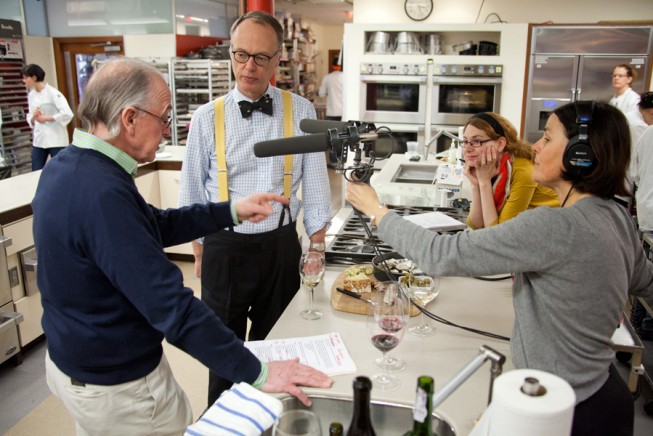
The late Yogi Berra is credited with saying that you can observe a lot by watching. As with many of the late Yankee catcher’s quips, it seems silly at first. Only upon reflection do you begin to see that there’s something meaningful hiding behind those tortured semantics.
If we were to apply the Yogism to wine, it might come out something like this: To understand what kind of wine you most enjoy and value, look closely at your buying habits. It seems obvious, but isn’t entirely. Speaking as a wine buyer purchasing a lot of wine every week, I know it’s possible to fail to see the patterns in your own actions until one day, while stocking the shelves or reviewing invoices, you notice something you hadn’t before.
So it was a couple of weeks ago at Formaggio Kitchen when we became fully conscious of the number of wines made with the Verdicchio grape that had maneuvered themselves onto our shelves. It sparked a conversation here about why we seem to be drawn to wine made from a grape with a name that must be just about the only one in any language to rhyme with radicchio.
First a bit of background. Verdicchio is native to just one little corner of Italy, and a somewhat obscure corner at that: the Marche. Picture the mainland of Italy, and the Marche is found about halfway up, on the Adriatic or eastern coast of the boot.
Verdicchio has been there for longer than anyone can determine. Recent DNA analysis has liked it with two other varieties – the Trebbiano di Soave and Trebbiano di Lugana, which are used as the basis of wines made further north and much farther inland.
Most Verdicchio is grown within about 20 miles of the Adriatic, and that means that we have another one of these ‘if-it-grows-together-it-goes-together’ wine and food pairing situations. On its own ‘hood, Verdicchio is the go-to drink with the raw fish dish the locals call crudo – and by extension with sashimi, sushi, or ceviche.
My guess is that you don’t eat either crudo or sashimi any more often than I do, so we’ll have to reach well beyond Verdicchio’s affinity for raw fish to find the answer to its appeal.
I might suggest that with its dry fruit and rather lightly grippy texture that Verdicchio strikes some of us as white wine with a red wine affect. This would account for its surprising versatility: a more than fit companion for grilled as well as raw fish, roast chicken and pork dishes. We like it too with harder sheep’s cheeses – normally red wine territory.
In the Marche as elsewhere in central Italy, white wines were historically made without benefit of cooling technology or stainless steel tanks – so a certain amount of oxidation was to be expected and became characteristic. It was also the case that grapes destined to make white wine were typically crushed, the skins left to infuse the fermenting wine with pigment and tannin – even if only for a few hours. This would have given old time-y Verdiccio more color and tannnin than is typical in modern technical winemaking.
The Verdicchio we’re most excited about comes from producers who, while perhaps not trying to fully replicate the traditional approach, aim at a profile that hearkens back to it. The result are wines with a golden hue, savory, lightly aldehydic (think Sherry) aromas, and a texture that gently clutches at your palate.
This not to suggest that these wines are lacking in fruit. There’s often a good deal of it in the form of apple or ripe pear flavors. But the orchard fruit is typically garnished with something like green herbs and a nutty, perhaps almond-like note on the finish. Those savory elements add interest and know how to play nice with what’s for supper.
For our radio segment, I brought three wines for Chris to taste:
- Cantine Politi “Loritello” Verdichhio dei Castelli di Jesi (around $15)
- Ca’Liptra “Kypra” Verdicchio dei Castelli di Jesi Classico Superiore (around $23)
- La Distesa “Terre Silvate” IGT Marche Bianco (around $25).
Each of these comes from a small production winery and may be hard to find where you are. As with most categories, industrial scale production vitiates character and quality, and making an effort to seek out the best artisanal examples in your market will reward you.
Ask your local wine shop for what they can recommend from the region. You may just find that the staff is as enthusiastic as we are for these unusual, engaging wines.
Stephen Meuse can be reached at stephenmeuse@icloud.com